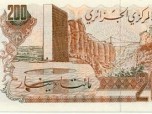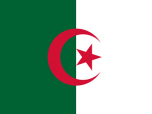
 Officially known as the People’s Democratic Republic of Algeria, this North African country is considered the second largest country on the entire African continent and the largest on the Mediterranean Sea. In the past, Algeria was a popular destination, but the civil war in 1992 affected the tourism industry. Tourism began to improve in small increments early in 2000.The Sahara region covered by Algerian territory became accessible to visitors. Independent travel have become unpopular since the threat of abductions in 2003.
Officially known as the People’s Democratic Republic of Algeria, this North African country is considered the second largest country on the entire African continent and the largest on the Mediterranean Sea. In the past, Algeria was a popular destination, but the civil war in 1992 affected the tourism industry. Tourism began to improve in small increments early in 2000.The Sahara region covered by Algerian territory became accessible to visitors. Independent travel have become unpopular since the threat of abductions in 2003.
Despite the lack of visitors, Algeria remains to be a fascinating country. Places to visit include the regions of Tassili N’Ajjer and Hoggar, both listed as UNESCO Heritage Sites. These are place where local color is rife in the everyday lives of traditional Algerian tribes. There is also the Algiers, where the old meets the new to showcase an interesting mix of Algeria’s colonial past and hopeful present. Timimoun provides visitors a slice of the Sahara desert; it is made interesting by the sand dunes that divide the region in two.
Because of its geographical location, the weather in Algeria is mildly wet during winters but can get extremely hot and dry during the summer. To enjoy the coastal area, it is recommended you travel during the months of spring and summer. On the other hand, the Saharan region is best enjoyed between the late autumn and the early spring months between November and April.
Although the government has taken steps to ensure the safety of tourists, it is still advisable to check safety advisories. Because Algeria has gained an unfavorable reputation in how they treat visitors, it is best to exercise precaution before finalizing your plans, whether back-packing or other outdoor activities.














